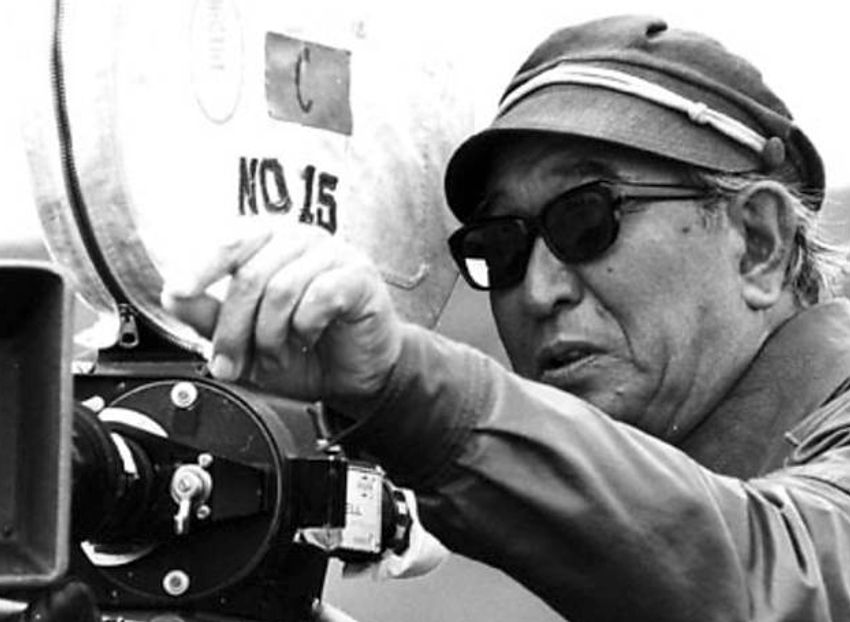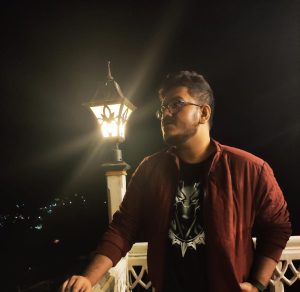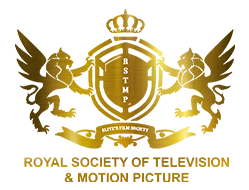
Akira Kurosawa: Influencer of World Cinema
An article by | Debopam Deb Roy
Much before George Lucas made Star Wars or Quentin Tarantino made Pulp Fiction, modern cinema was the subject of constant experimentation in terms of form, style and camerawork. The renowned Japanese filmmaker, Akira Kurosawa, envisioned the possibility of appropriating Western ideologies of filmmaking while his contemporaries still stuck to crafting a separate style of their own based on traditional theater, minimalism and quiet introspection that distinguished their films from Western films of that era. Kurosawa had a taste for American pulp novels and literary works of Shakespeare, both of which acted as source materials for his films. While post-WWII Japan saw occupation by the United States, Kurosawa embraced the popular narrative styles of Hollywood and its filmmaking techniques. Moreover, his experience in the Japanese studio system helped him combine these elements together and create films which would later be accepted by people from both West and East. His undaunting spirit of creating something new in spite of repeated challenges remains inspirational till this day. His contribution in the realm of postmodern cinema is undoubtedly significant for Hollywood filmmakers in general and, in fact, has been a guiding light for many directors who made a difference in the history of cinema.

Akira Kurosawa was an avid reader who developed his taste in Western literature before he started making films. He was heavily influenced by the literary works of great authors, starting from Shakespeare to Dostoyevsky. He even reinterpreted the works of Macbeth and King Lear in films like Throne of Blood and Ran, respectively, as tales of war and political intrigue in feudal Japan. There is a stark similarity between how Shakespeare and Kurosawa treated their characters, particularly if we observe the tragic characters. Just as Shakespeare’s tragic characters encounter downfall because of the scheming of colleagues or because of their violent ambitions, Kurosawa’s samurai share the same fate in his films. He pioneered in the reinterpretation of English plays for his audience by blending in elements of Japanese Noh theater. The characters in his renditions would often wear makeup and stylize their hair in a manner that reflected the emotive masks used in Noh, which symbolized the character’s attempt in hiding his true identity behind false words. It is quite interesting to observe how he gradually became one of the most celebrated international filmmakers through his influences and achievements, thus inspiring future generations of filmmakers who wished to experiment and explore genre and identity in film.
 Just like Shakespeare’s texts included comedic characters in serious dramas, like the fool, most of Kurosawa’s films include similar characters. These characters were included so as to provide levity to often offset the time dire nature of a film. Sometimes, they would often relate the story and setting elements to the audience. When it comes to storytelling, Kurosawa’s treatment of a historical tale is very similar to that of Shakespeare’s style. Kurosawa’s The Hidden Fortress instantiates Shakespeare’s influence quite brilliantly alongside being one of his most influential films. Even if it is not a Shakespearean adaptation, it contains multiple Shakespearean elements that later went on to become fundamental to his oeuvre. For example, to relate to an aristocratic morality tale, Kurosawa would often resort to using common citizens. Although it was purposefully done for the sake of entertainment only, this model would be later appropriated by the modern Hollywood adventure film. The Hidden Fortress uses tropes like greed, loyalty, class difference and status of women much like Shakespeare did in his literary works. The two peasants, Tahei and Matakishi, are seen arguing in a desert at the very beginning of the film. Through their dialogue, we are introduced to the setting of the story. However, their folly and bickering serves as comic relief and offsets the serious nature of the General Makabe. George Lucas, the creator of Star Wars franchise, is known to have acknowledged The Hidden Fortress as the influencing film behind Star Wars. Similarities can be drawn in between Princesses Yuki and Leia, Obi-Wan/Han Solo and Makabe, even Tahei and Matakishi can be compared to R2D2 and C3PO with regards to their on-screen relationship.
Just like Shakespeare’s texts included comedic characters in serious dramas, like the fool, most of Kurosawa’s films include similar characters. These characters were included so as to provide levity to often offset the time dire nature of a film. Sometimes, they would often relate the story and setting elements to the audience. When it comes to storytelling, Kurosawa’s treatment of a historical tale is very similar to that of Shakespeare’s style. Kurosawa’s The Hidden Fortress instantiates Shakespeare’s influence quite brilliantly alongside being one of his most influential films. Even if it is not a Shakespearean adaptation, it contains multiple Shakespearean elements that later went on to become fundamental to his oeuvre. For example, to relate to an aristocratic morality tale, Kurosawa would often resort to using common citizens. Although it was purposefully done for the sake of entertainment only, this model would be later appropriated by the modern Hollywood adventure film. The Hidden Fortress uses tropes like greed, loyalty, class difference and status of women much like Shakespeare did in his literary works. The two peasants, Tahei and Matakishi, are seen arguing in a desert at the very beginning of the film. Through their dialogue, we are introduced to the setting of the story. However, their folly and bickering serves as comic relief and offsets the serious nature of the General Makabe. George Lucas, the creator of Star Wars franchise, is known to have acknowledged The Hidden Fortress as the influencing film behind Star Wars. Similarities can be drawn in between Princesses Yuki and Leia, Obi-Wan/Han Solo and Makabe, even Tahei and Matakishi can be compared to R2D2 and C3PO with regards to their on-screen relationship.
 Kurosawa started making several films under the Noir genre mostly in the post WWII era. Due to the rapid modernization of the country that followed with the American occupation, a new set of social issues came into existence which needed confrontation. The evolution of morality and its transformation between generations demanded the same for the notion of the hero as well. Themes from Gangster films were being reinterpreted and combined with feudal period Japan in films like Rashomon, Stray Dog and Drunken Angel. Among these films, Rashomon stands out as one of the most profound examples which are heavily influenced by the American Gangster films of the 1940s. The introduction of the role of an innocent widow (played by Machiko Kyo), who eventually emerges as the deadly femme fatale, is undoubtedly one of the most striking characteristics of this genre. Whether it’s the deft use of light and shadow, or the blotchy sunlight filtering through the trees that conceals and reveals the motives of the characters, Rashomon is reminiscent of the stylized set work of the films from the 40s.
Kurosawa started making several films under the Noir genre mostly in the post WWII era. Due to the rapid modernization of the country that followed with the American occupation, a new set of social issues came into existence which needed confrontation. The evolution of morality and its transformation between generations demanded the same for the notion of the hero as well. Themes from Gangster films were being reinterpreted and combined with feudal period Japan in films like Rashomon, Stray Dog and Drunken Angel. Among these films, Rashomon stands out as one of the most profound examples which are heavily influenced by the American Gangster films of the 1940s. The introduction of the role of an innocent widow (played by Machiko Kyo), who eventually emerges as the deadly femme fatale, is undoubtedly one of the most striking characteristics of this genre. Whether it’s the deft use of light and shadow, or the blotchy sunlight filtering through the trees that conceals and reveals the motives of the characters, Rashomon is reminiscent of the stylized set work of the films from the 40s.

Any genre piece, whether it’s a Western, a Gangster or a Samurai flick, has a basic goal- to provide an escape from reality based on a well-worn formula. Their appeal to a particular demography is solely to reap profits or to maximize capital. Kurosawa brilliantly calls on Shakespeare and Japanese tradition as sources to his Samurai films, which use technical expertise and morality plays to elevate the medium. When we imagine smooth talking gangsters with Brooklyn accents, their image does not go at par with a stolid samurai from Japan. But it is Kurosawa whose impressive craft made it possible to blend Western and Eastern genre pieces to form a more universal style of filmmaking. If we consider Jean-Pierre Melville’s Le Samurai (1967), we come across a lone gangster Jef Costello, who lives his life by a strict code, much like that of a Samurai. He is trained, focused and is ready to die as any of Kurosawa’s characters. Even the form of is much inspired from his films, where the character must live a certain kind of life to be successful, or merely, just to survive. Melville combines the facets of noir along with the nuanced works of Akira Kurosawa to elucidate a particular genre while carefully diverting our attention through another. The Canadian director Jim Jarmusch also recognizes the contribution of Kurosawa in the world of Gangster films by using Rashomon-like storytelling method in his film Ghost Dog (1999). He molds his protagonist, a hitman, much like the Samurai who follows a moral code known as the Hagakure, thereby adding a Japanese flavour to his gangster film.
 It would be wrong to say that Kurosawa’s films were only limited to the Noir genre as his notable genre influences entailed American Westerns as well. For example, Kurosawa’s The Seven Samurai and John Sturges’ The Magnificent Seven can be introspected to draw similarities and thus, observe how Kurosawa’s film actually had a great influence over it. Both the period pieces bring together an ensemble of star-studded cast as hired mercenaries to protect a small village from raiders. Whether its Ronin Samurai and mercenary gunmen, or a set of varying personalities that play significant roles, such elements are interchangeable between a Samurai and a Western film. These overlapping spheres of influence across genres lead to an international style of filmmaking, of which Kurosawa was at the forefront.
It would be wrong to say that Kurosawa’s films were only limited to the Noir genre as his notable genre influences entailed American Westerns as well. For example, Kurosawa’s The Seven Samurai and John Sturges’ The Magnificent Seven can be introspected to draw similarities and thus, observe how Kurosawa’s film actually had a great influence over it. Both the period pieces bring together an ensemble of star-studded cast as hired mercenaries to protect a small village from raiders. Whether its Ronin Samurai and mercenary gunmen, or a set of varying personalities that play significant roles, such elements are interchangeable between a Samurai and a Western film. These overlapping spheres of influence across genres lead to an international style of filmmaking, of which Kurosawa was at the forefront.
 While Kurosawa was being constantly criticized by Japanese critics in the 1950s for making films that were too Western in style and narrative, he crafted Yojimbo (1959) basing it on the typical gun-slinging Western genre. The concept behind Yojimbo is borrowed from Red Harvest, a 1929 Dashiel Hammet novel, whose story tells us the familiar story of a lone detective who plays two crime families against each other. The only difference between Yojimbo and Red Harvest is that instead of a lone detective, we come across a lone samurai who plays two crime families against one another. The framing of Mifune is definitely reminiscent of a western. Whether it’s him walking down empty streets, or there is a face-off between two men with lots of sand and space between them, almost every shot reminds us of a John Ford or Howard Hawks film. In a typical Western, the plot consists of a sturdy moral character, a skilled hero who would make a dusty and corrupt town safe again. However, Kurosawa’s protagonist is more of a noir-inspired anti-hero who saves the day. Kurosawa saw the samurai or the gunslinger as a complex character whose morals do not match with that of the society. Rather, he is often seen playing for no other but himself. This fascinating take on the western genre inspired many in the 1960s and as a result, great directors like Clint Eastwood and Sergio Leone excelled in the anti-hero fueled spaghetti western genre, borrowing heavily from the works of Kurosawa. His achievements and influences inspired several generations of filmmakers who would explore the world of genre and identity in a film. He is one of the first international filmmakers whose method of classicism and cultural collage inspired a myriad of film directors to break every conventional form and barrier.
While Kurosawa was being constantly criticized by Japanese critics in the 1950s for making films that were too Western in style and narrative, he crafted Yojimbo (1959) basing it on the typical gun-slinging Western genre. The concept behind Yojimbo is borrowed from Red Harvest, a 1929 Dashiel Hammet novel, whose story tells us the familiar story of a lone detective who plays two crime families against each other. The only difference between Yojimbo and Red Harvest is that instead of a lone detective, we come across a lone samurai who plays two crime families against one another. The framing of Mifune is definitely reminiscent of a western. Whether it’s him walking down empty streets, or there is a face-off between two men with lots of sand and space between them, almost every shot reminds us of a John Ford or Howard Hawks film. In a typical Western, the plot consists of a sturdy moral character, a skilled hero who would make a dusty and corrupt town safe again. However, Kurosawa’s protagonist is more of a noir-inspired anti-hero who saves the day. Kurosawa saw the samurai or the gunslinger as a complex character whose morals do not match with that of the society. Rather, he is often seen playing for no other but himself. This fascinating take on the western genre inspired many in the 1960s and as a result, great directors like Clint Eastwood and Sergio Leone excelled in the anti-hero fueled spaghetti western genre, borrowing heavily from the works of Kurosawa. His achievements and influences inspired several generations of filmmakers who would explore the world of genre and identity in a film. He is one of the first international filmmakers whose method of classicism and cultural collage inspired a myriad of film directors to break every conventional form and barrier.

Debopam Deb Roy, a post graduate with a degree in Film Studies, French Language (DELF A2) from Alliance Française du Bengale working as a Content Writer at Human Lab Corporation with an interest in writing and watching films.


